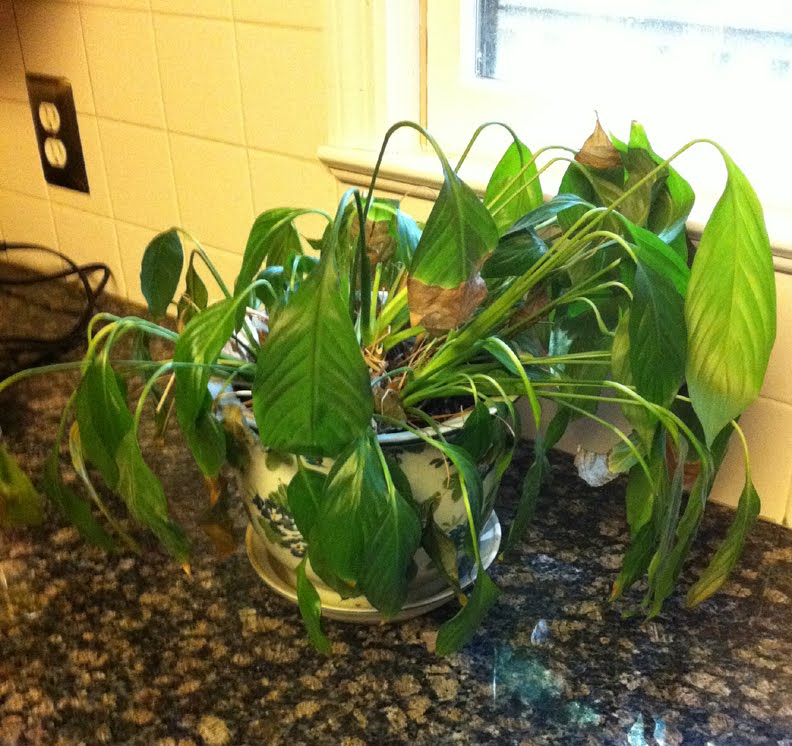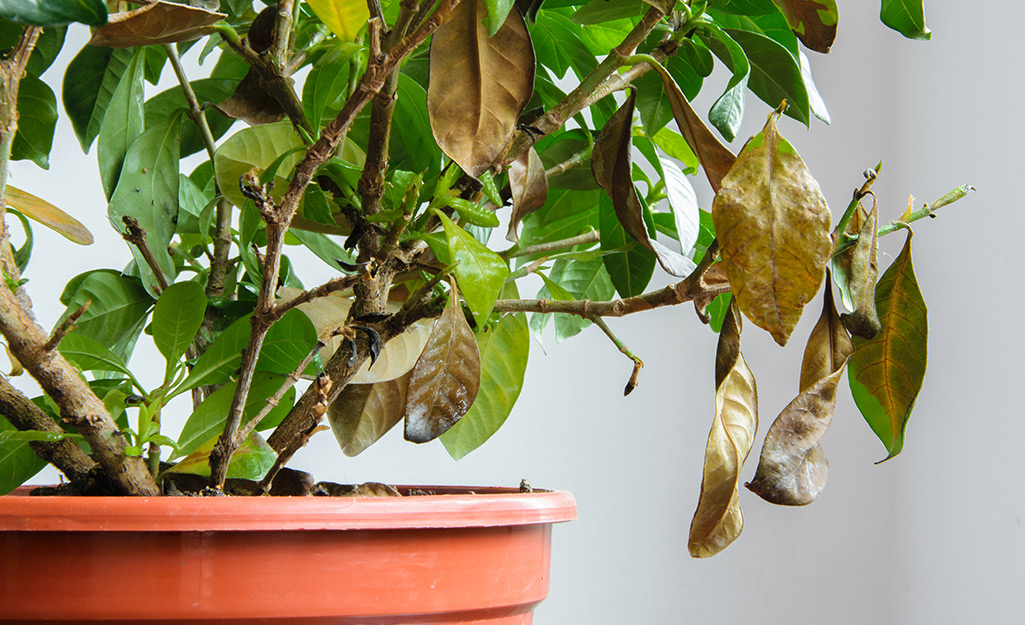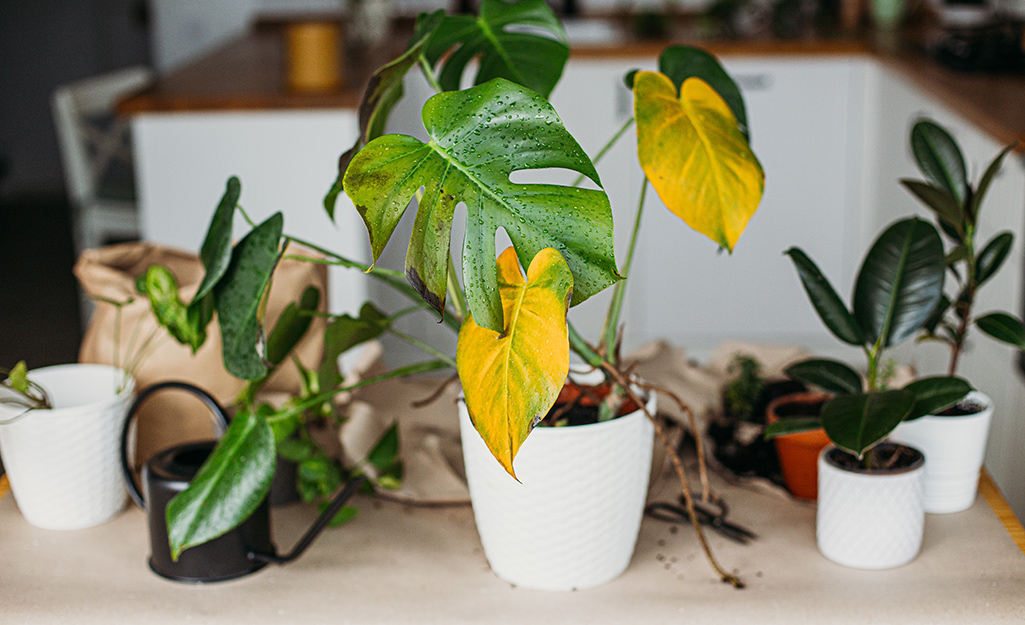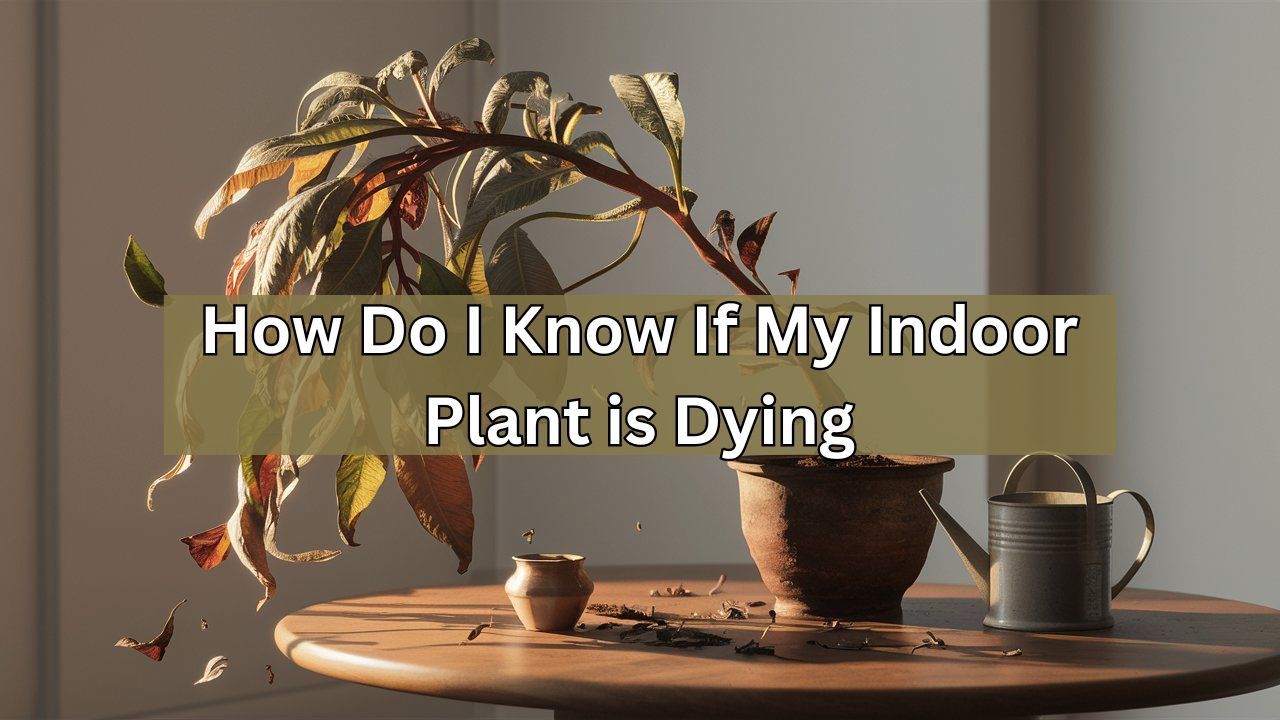If your indoor plant is wilting, yellowing, or dropping leaves, it might be dying. Check for root rot or pests as well.
Indoor plants add life and beauty to any space, but they need proper care. Recognizing the signs of a dying plant early can save it. Look for symptoms like wilting, yellowing leaves, or leaf drop. These can indicate problems like overwatering, underwatering, or pests.
Inspect the roots for rot and examine the leaves for signs of infestation. Providing the right amount of light, water, and nutrients is crucial for your plant’s health. Adjust its care routine based on its specific needs. Knowing these basics helps keep your indoor plants thriving and vibrant.
Introduction To Plant Health
Keeping indoor plants healthy can be challenging. Understanding plant health is key. Healthy plants brighten our homes. They also improve air quality.
The Importance Of Recognizing Plant Distress
Recognizing plant distress early can save your plant’s life. Signs of distress include yellow leaves and drooping stems. Wilting and discoloration are other common signs. Early detection allows for timely intervention.
Common Misconceptions About Plant Care
Many people think more water is always better. This is a common misconception. Too much water can drown the roots. Another myth is that all plants need lots of sunlight. Some plants thrive in low light conditions.
Here are some common misconceptions:
- More water is always better.
- All plants need lots of sunlight.
- Fertilizer is needed all the time.
Understanding these myths can help you care for your plants better. Always research your specific plant’s needs.

Credit: www.goodearthplants.com
Sign 1: Discoloration Of Leaves
One of the first signs that your indoor plant might be dying is the discoloration of leaves. Healthy leaves are usually green and vibrant. When they start changing color, it’s a clear indication that something is wrong. This section will cover two common types of leaf discoloration: yellowing leaves and brown spots.
Yellowing Leaves And Their Causes
Yellow leaves are a common issue for indoor plants. This can be due to several reasons:
- Overwatering: Too much water can suffocate the roots. This prevents them from absorbing nutrients.
- Underwatering: Not enough water makes the leaves dry and brittle.
- Lack of sunlight: Plants need light for photosynthesis. Without it, leaves turn yellow.
- Nutrient deficiency: A lack of essential nutrients can cause yellowing.
Brown Spots And What They Indicate
Brown spots on leaves are another warning sign. These spots can mean different problems:
- Fungal infections: Fungi thrive in moist conditions. They cause brown spots.
- Pest infestations: Insects like spider mites and aphids can leave brown marks.
- Sunburn: Too much direct sunlight can scorch the leaves.
- Water quality: High levels of chlorine or fluoride in water can cause spots.
Knowing the cause of leaf discoloration can help you save your plant. Pay attention to these signs and take action quickly.
Sign 2: Wilting Or Drooping
Wilting or drooping leaves can be a clear sign of a dying plant. It’s essential to understand why your plant is wilting. The causes can be varied. This section will help you identify if your plant is underwatered or overwatered.
Underwatering Vs. Overwatering
Underwatering: If your plant doesn’t get enough water, it will wilt. The soil will be dry. The leaves may turn brown and crispy.
Overwatering: Excessive water can also cause wilting. The soil will be soggy. The leaves may turn yellow and soft.
| Condition | Signs |
|---|---|
| Underwatering | Dry soil, brown leaves, crispy texture |
| Overwatering | Soggy soil, yellow leaves, soft texture |
How To Tell If Your Plant Is Thirsty Or Drowned
- Check the soil: Stick your finger into the soil. If it’s dry, the plant needs water. If it’s wet, it has too much water.
- Leaf color: Brown and crispy leaves indicate underwatering. Yellow and soft leaves indicate overwatering.
- Weight of the pot: A light pot means dry soil. A heavy pot means wet soil.
Understanding these signs can help you save your plant. Adjust your watering habits accordingly. Your plant will thrive with the right care.

Credit: www.homedepot.com
Sign 3: Leaf Drop
Leaf drop is a common sign that your indoor plant might be in trouble. It’s crucial to distinguish between normal leaf shedding and alarming rates of leaf drop. Knowing the difference can help save your plant.
Natural Leaf Shedding Vs. Alarming Rates
Plants naturally shed old leaves to make room for new growth. This process is normal and usually happens slowly.
- Natural Shedding: A few leaves falling off over weeks.
- Alarming Rates: Large numbers of leaves dropping in a short time.
- Natural shedding is a sign of healthy growth.
- Alarming rates indicate stress or disease.
Environmental Stress Factors Leading To Leaf Drop
Several environmental stress factors can cause leaf drop in indoor plants. Understanding these factors can help you address the issue promptly.
| Factor | Description |
|---|---|
| Watering Issues | Both overwatering and underwatering can cause leaf drop. |
| Light Levels | Too much or too little light affects plant health. |
| Temperature Changes | Sudden temperature shifts can stress plants. |
| Pests and Diseases | Infestations or infections can lead to leaf loss. |
To prevent leaf drop, ensure proper watering, lighting, and temperature conditions. Regularly check for pests and diseases to keep your plant healthy.
Sign 4: Slow Or Stunted Growth
Noticing slow or stunted growth in your indoor plant can be alarming. It signals that your plant isn’t thriving. This could be due to several factors. Understanding these factors can help you save your plant.
Nutrient Deficiencies And Plant Growth
Nutrient deficiencies are common in potted plants. Plants need nutrients like nitrogen, phosphorus, and potassium. If your plant isn’t getting these, growth slows down. You might see pale leaves or weak stems.
Using the right fertilizer can help. Check the label for a balanced mix. The table below shows common deficiencies and their symptoms:
| Deficiency | Symptoms |
|---|---|
| Nitrogen | Pale leaves, slow growth |
| Phosphorus | Dark green leaves, stunted growth |
| Potassium | Yellow leaf edges, weak stems |
The Role Of Light In Plant Development
Light is crucial for plant development. Without enough light, plants can’t photosynthesize. This leads to slow or stunted growth. Make sure your plant gets the right amount of light.
Different plants need different light levels. Some need bright light, others thrive in low light. Check your plant’s light requirements. Use grow lights if natural light is insufficient.
- Place plants near a window for natural light.
- Rotate plants to ensure even light exposure.
- Use sheer curtains to diffuse intense sunlight.
Proper lighting ensures healthy, robust growth.
Sign 5: Root Rot
Root rot is a common issue that indoor plants face. It can be fatal if not addressed promptly. Root rot occurs when plant roots sit in soggy soil for too long. This condition leads to the roots decaying and becoming incapable of absorbing nutrients.
Identifying Root Rot And Its Symptoms
Recognizing root rot early can save your plant. Here are some symptoms to watch for:
- Mushy, brown roots: Healthy roots are firm and white.
- Foul odor: Rotting roots often produce a bad smell.
- Yellowing leaves: Leaves turn yellow and may fall off.
- Wilting: The plant looks droopy, even with adequate water.
- Slow growth: The plant shows minimal or no growth.
Steps To Save A Plant With Root Rot
Follow these steps to rescue your plant:
- Remove the plant: Gently take the plant out of its pot.
- Inspect the roots: Check for mushy, dark, or smelly roots.
- Trim affected roots: Use clean scissors to cut away rotten roots.
- Disinfect the pot: Clean the pot with a bleach solution.
- Repot the plant: Use fresh, well-draining soil to repot.
- Water properly: Water the plant only when the top soil is dry.
- Provide proper light: Ensure the plant gets enough indirect sunlight.
These steps can help you save your indoor plant from root rot. Pay attention to watering habits and soil quality to prevent future issues.
Preventive Measures For Plant Health
Maintaining healthy indoor plants involves more than just watering them. It requires understanding their needs, including light, water, and nutrients. These preventive measures ensure your plants thrive and remain vibrant.
Best Practices In Watering
Watering is crucial for plant health. Overwatering or underwatering can cause serious problems.
- Check soil moisture before watering. Stick your finger one inch into the soil.
- If the soil feels dry, it’s time to water.
- Use a drainage-friendly pot. Ensure excess water can escape.
- Water plants in the morning. It helps them absorb moisture better.
| Plant Type | Watering Frequency |
|---|---|
| Succulents | Once every 2 weeks |
| Ferns | Twice a week |
| Orchids | Once a week |
The Significance Of Proper Lighting
Proper lighting is essential for indoor plants. Light helps plants create food through photosynthesis.
- Identify the light needs of your plant. Some need full sun, others prefer shade.
- Place plants near windows for natural light. South-facing windows are ideal.
- Use grow lights in low-light areas. LED grow lights are energy-efficient.
- Rotate plants weekly. This ensures even light exposure.
By following these preventive measures, you can ensure your indoor plants stay healthy and vibrant.

Credit: www.homedepot.com
Reviving A Dying Plant
Is your indoor plant looking less lively? Don’t worry. There are ways to save it. With some effort, your plant can thrive again. Follow these steps to give it a second chance.
When To Repot Your Plant
Check the roots of your plant. Are they crowded? If yes, it needs a new pot. Choose a pot that’s one size bigger. Make sure it has drainage holes. Fresh soil can help too. This gives the roots more room to grow.
| Signs | Action |
|---|---|
| Roots coming out of the drainage holes | Repot in a larger pot |
| Soil dries out quickly | Check root health and repot |
| Roots circling the pot | Repot and loosen the roots |
Creating The Ideal Environment For Recovery
Your plant needs the right environment to recover. Ensure it gets enough light. Not too much, but not too little. Water it properly. Over-watering and under-watering both harm plants. Check the soil moisture regularly.
- Place the plant in indirect sunlight.
- Water only when the top inch of soil is dry.
- Maintain a consistent temperature.
- Avoid placing the plant near drafts or heaters.
A little care goes a long way. Follow these steps and watch your plant come back to life.
Frequently Asked Questions
How To Revive A Dying Indoor Plant?
Revive a dying indoor plant by checking for proper light, watering appropriately, trimming dead leaves, and ensuring good drainage.
Can A Plant Recover From Dying?
Yes, a plant can recover from dying with proper care. Water, sunlight, and nutrients are essential for revival. Trim dead parts to encourage new growth.
Is My Plant Dying Or In Shock?
Check for wilting, yellowing, or dropping leaves. Shock often shows sudden changes, while dying plants deteriorate gradually.
How Long Is The Life Expectancy Of An Indoor Plant?
Indoor plant life expectancy varies. Most live 2-5 years with proper care. Some can thrive for decades.
Conclusion
Recognizing the signs of a dying indoor plant is crucial for its survival. Check for yellow leaves, drooping stems, or moldy soil. Proper care and timely intervention can revive your plant. Regularly monitor its health and adjust care routines as needed.
Healthy plants enhance your living space and well-being.

My mission is to help you bring the beauty of nature indoors with expert advice, detailed plant care guides, and creative design ideas.




